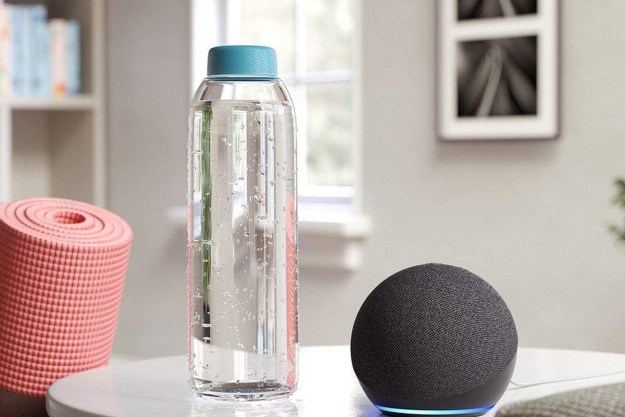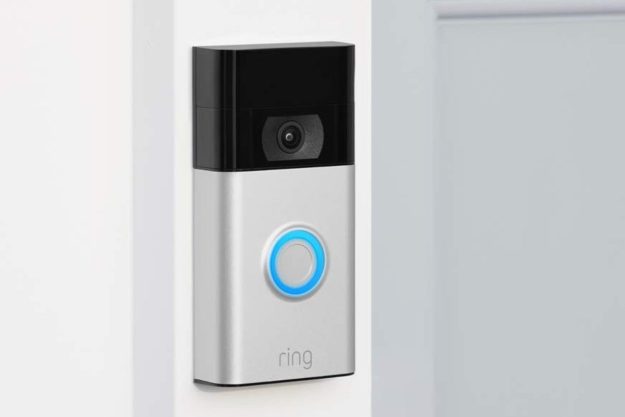The smart home world is dominated by three main options: Amazon, Google, and Apple. (Sorry, Bixby and Cortana, you aren’t part of this race.) Not all devices work across all platforms, and as more people invest in smart home technology and take advantage of sales, it can be hard to find a single platform that meets all of your needs.
Amazon, Google, and Apple all have different strengths. Depending on your needs and what you want your smart home platform to do, you may prefer one platform over another. This guide will examine the pros and cons of each platform, their product support, the ease of installation, and other aspects worth considering.

Pros and cons
All three platforms excel in some areas and struggle in others. Knowing what those strengths and weaknesses are can help you determine which platform is the right pick for you.
Amazon Alexa
Amazon’s Alexa is one of the most popular smart home platforms. According to many reports, Amazon dominates 53% of the smart home market. Amazon has consistently and aggressively expanded its grip over the market since the introduction of the Amazon Echo Dot, and the miniature device remains the bestselling smart speaker of all time.
One of the main strengths of Alexa is the Skill system. There are more than 100,000 Alexa Skills available that do everything from providing weather reports to suggesting recipes. The Skill System also makes it easy for users to create custom skills, too.
If you use the Amazon Echo Show, Alexa can display information in a visual format. This allows users to walk through recipes step-by-step, see your smart home status at a glance, and more. Alexa can also recognize individual voices and provide personalized results for each member of the family.
There are certain areas where Alexa isn’t always the best pick, however. It doesn’t understand complicated requests as well as Google Assistant does, and follow-up questions are more difficult to ask without saying “Alexa” before every request. There are also a limited number of activation phrases. You cannot customize the trigger word outside of a few preset options.
Alexa predictably plays into the Amazon ecosystem. You can stream Prime Video to the Echo Show, play Audible over the smart speakers, and even do all of your online shopping through Alexa. On the other hand, it sucks at YouTube — Alexa cannot play YouTube directly.
Google Assistant
Google Assistant leads the pack behind Alexa in terms of popularity. The voice assistant is found not only in smart speakers, but also in phones. This gives it a reach that Alexa doesn’t have (although you can still use Alexa on your phone through the Alexa app), and brings in users that might not otherwise be exposed to Google Assistant.
Google is better able to answer questions and communicate in a way that feels more natural than Alexa. Users can ask follow-up questions in a format like, “Hey Google, when did Casablanca come out?” “Who was the lead?” Google will remember the context of the original question and provide the proper answer.
Like Alexa, Google can distinguish between individual users and provide personalized answers. This helps Google Assistant to make better music recommendations and provide more in-context answers. Google Assistant also displays information in an easy-to-read format when viewed through a Google Assistant-powered smart display — like the Nest Hub or Nest Hub Max.
Google Assistant has fewer privacy features than Amazon Alexa does, however. There has been controversy in the past about the way Google handled customer data.
Apple’s HomeKit
HomeKit is the least-used of the three major platforms, due in part to the limited number of compatible devices. However, HomeKit is the most secure of the three major platforms. The same privacy features that Apple makes part of its phone ecosystem are included in HomeKit.
HomeKit also has the most attractive user interface of the three major platforms, boasting the same sense of style as other Apple products. HomeKit is also one of the easiest platforms to set up, but there are numerous downsides that make it lag behind the competition.
The primary way to connect a device to HomeKit is through a scannable code. These codes have to be kept safe if you remove and wish to re-add a device at a later date. HomeKit also requires a hub in the form of an Apple TV, a HomePod, or a compatible iPad that must be turned on and connected to the network in order to operate.
Setting devices up through HomeKit means you don’t have to download secondary apps. For example, smart security cameras often require a dedicated app to view the livestream and perform tasks, but compatible HomeKit cameras are set up and integrated through the Apple Home app. This means you can install, view, and control the camera from one location without cluttering your phone with unnecessary apps.
Product support
Another important consideration is the number of third-party devices that a platform supports. The biggest names in the smart home field (Philips Hue, LIFX, etc.) work with all three of the major platforms, but there are smaller companies that support only one of the three.
When it comes to third-party support, Alexa has the widest reach. The platform works with more than 60,000 different devices. Google Home works with more than 30,000, coming in behind Alexa in terms of third-party support. Modern smart home devices tend to work with both of the major platforms, however.
Apple HomeKit has the lowest level of third-party compatibility. While it works with most major brands, there are a huge number of products that cannot be controlled through HomeKit. Most HomeKit-compatible devices are designed specifically for the platform.
Ease of installation
No one wants to spend hours fiddling with a complicated setup process. Thankfully, the vast majority of smart home devices are easy to set up, regardless of what platform they are on. Others require a bit more finesse.
Of the three platforms, Amazon Alexa is the most complicated when it comes to adding new devices, due in part to its interface. Even then, the setup process doesn’t take long and is simply a matter of going step-by-step through the menu.
Google Home is easier when it comes to adding devices. It detects when a compatible device is on the network and prompts the user to add the device. Once you tap the prompt, you may have to log into an account and follow the steps.
Apple HomeKit is both the easiest and hardest in terms of adding devices. The system of scanning codes makes setup a breeze, but if you lose the code (or the product doesn’t have a code), then it becomes a hassle to contact the company and have a new code issued for that specific device.

Investing in the right platform
Ultimately, the right platform depends on the devices you already use or the devices you intend to use. Although there is more compatibility between all three platforms than ever before, there are still ecosystems to keep in mind. If you are a die-hard Apple fan, then HomeKit may be the best option. You can control your home via Siri, and HomeKit is already part of iOS.
On the other hand, if you prefer the Android operating system (or are a fan of Google devices in general), then Google Home may be the best pick for you. Google Home is also more streamlined and more catered toward entertainment. A Chromecast makes it possible to stream your favorite music and movies to the TV from your phone, and new additions to the Nest Hub Max allow you to stream directly to the smart display.
Alexa is the go-to pick for anyone that wants an expansive, integrated smart home. The huge range of compatible devices means you can use any compatible devices and link them together to create a cohesive, powerful smart home that does what you need it to. Alexa is also a great pick for users who like the Ring home security system, as Amazon owns both.
Want more news, reviews, guides, and features from Digital Trends? Follow us on Apple News, Google News, and Flipboard.
More on smart home platforms
- Google Nest Mini vs Amazon Echo Dot
- Alexa may be everywhere, but it’s Google’s Assistant I want in my home
- Google Assistant vs. Amazon Alexa
- Avoid saying these words near your smart speaker
Editors' Recommendations
- Apple might launch a HomePod smart display in 2024
- What to do if your Amazon Alexa app is not working
- Do you need a subscription for a Ring doorbell or camera?
- 11 Sonos tips, tricks, and little-known features
- The best outdoor security cameras for 2023








